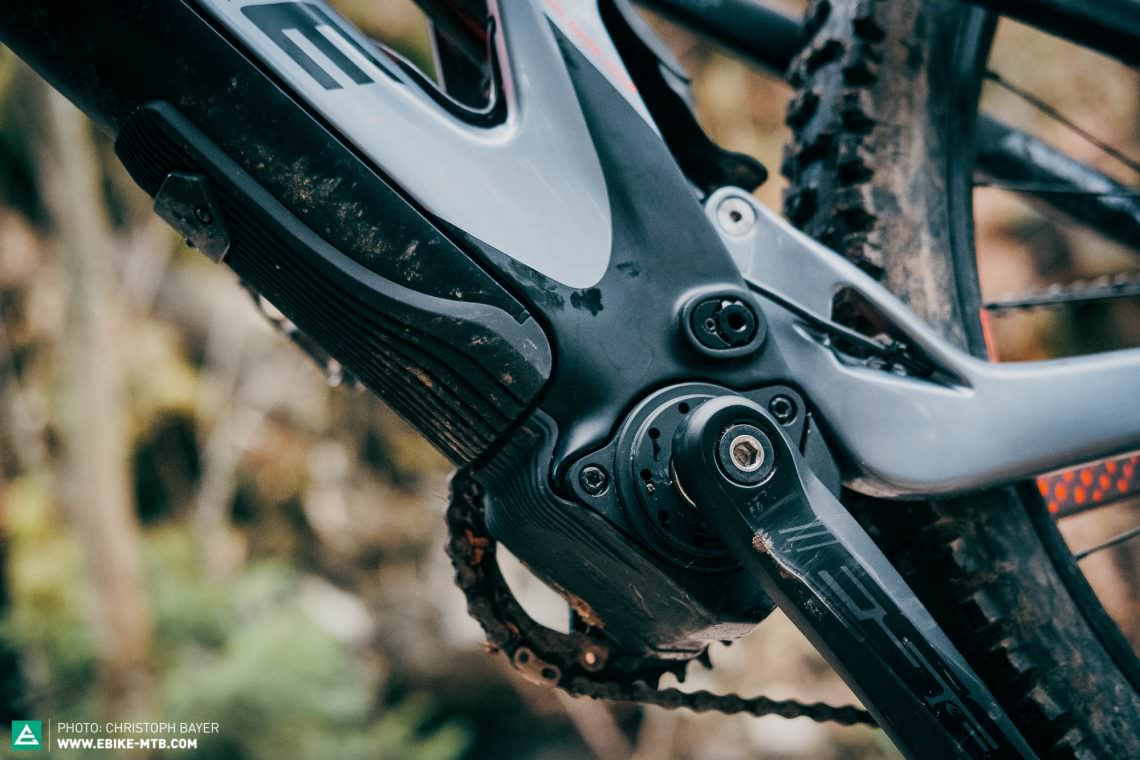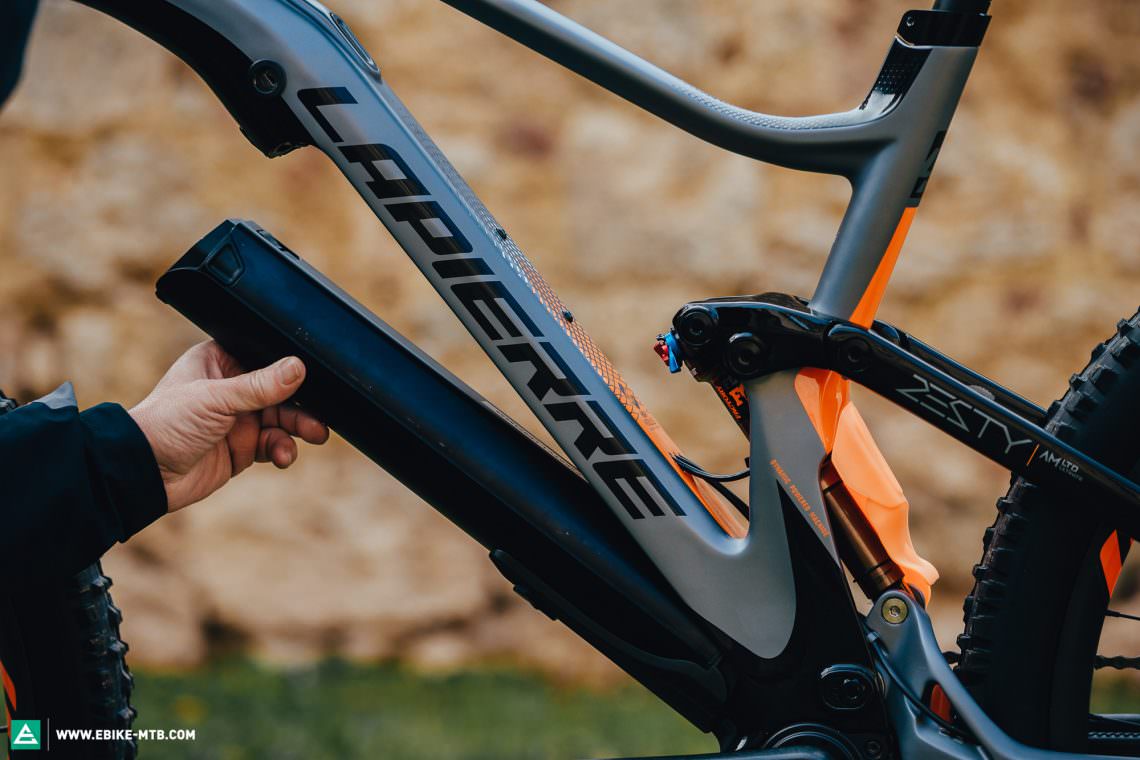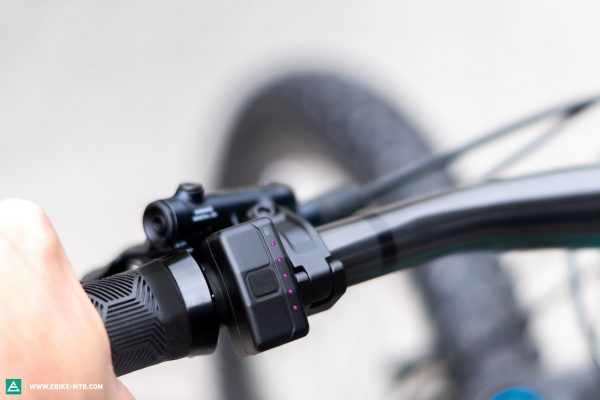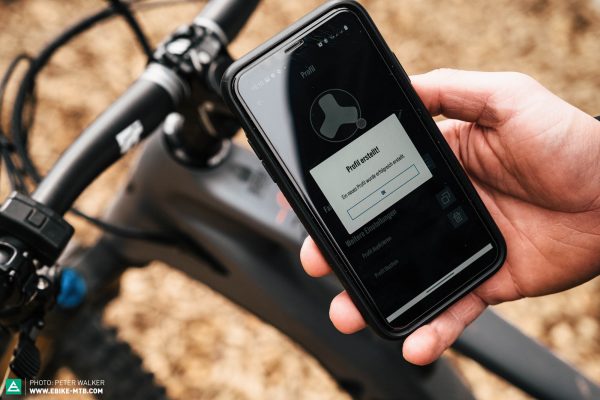The FAZUA Evation motor is the founding father of the Light eMTB concept. Last year’s software update has proven itself and made the compact system an interesting proposition for many bikers. The Update makes it more powerful, thus Fazua decided to rename it. How does the FAZUA RIDE 50 Evation fare against the newly developed competition?
This motor is part of our big e-mountain bike motor test. Click here for background information and the criteria of this test.

The FAZUA Evation is the multi-talent of our motor test. The slim drive unit, which packages the motor and battery on one unit, can be easily removed from the frame. That just leaves the minimal remote and 1.3 kg bottom bracket including the gearbox and sensors on your bike. In turn, any FAZUA equipped ebike can also be ridden without a motor, with no pedalling resistance and with minimal extra weight. If you’ve purchased the optional down tube cover, then you can use the space in the frame as a huge storage compartment. Just click the cover where the drive unit would usually be and you’ll have a place to stow all your trail essentials.

The 3.3 kg heavy drive unit can be completely removed from the frame. That lets the bike be ridden without a battery, motor and support.
Is this motor even on? Were it not for the high-pitched hum of the FAZUA RIDE 50 Evation in its highest setting, you could easily think, in the best way possible, that you’re riding without any support at all. That’s mainly thanks to the incredibly natural feeling ride that the FAZUA delivers in all of its support modes. The three assistance modes also offer more distinctly differentiated levels of support. The progressive River mode offers a very natural ride while the weaker Breeze mode is a lot more reserved and intended to be as frugal with the battery as possible. That means that the latter is too weak for extended trail use. With a 55 Nm output, there’s a noticeable deficit compared to stronger motors, though in Rocket mode – the highest support mode – the RIDE 50 Evation can easily keep up with all-rounders such as Shimano or Yamaha in flat terrain and on moderate inclines, cruising at the 25 km/h threshold. It only falls back significantly on steeper inclines, though it’s still significantly quicker than the Specialized SL 1.1 motor.

The new FAZUA Remote bX is controlled with a touch surface. In the wet, the touch functionality can be deactivated and the mechanical button used to switch modes instead.

Fine tuning the support modes can quickly get confusing with its technical jargon. FAZUA take a different approach and guide you through the setup with targeted questions. Cool!
FAZUA use the smallest battery in our test. The FAZUA Battery 250X has “just” a 252 Wh capacity but is also very compact and correspondingly light at 1.4 kg. Extended tours with lots of ascending that all-rounder motors are capable of, aren’t possible without a spare battery as a result. A spare battery starts at € 407 and can be stowed away in pretty much any rucksack. The closing mechanism of the drive unit means the battery sits securely but it can only be charged off the bike. Similar to Bosch, manufacturers are tied to FAZUA’s speed sensor, battery and remotes. However, there is more room to play with the individual setup of the support modes for both customers and dealers. The highlight of the package is the redesigned FAZUA Rider app, guiding you to the perfect motor setup by asking targeted questions. This feature is particularly helpful for beginners as they will quickly and easily find a setting that suits their riding style, riding characteristics and desired range. On top of that, the app enables tracking and navigation via your smartphone and also provides route information and other riding data. As such, FAZUA can do away with the display and use compact remotes instead, providing a compact remote that uses LEDs to report on battery level and the support mode. The FAZUA Rider app offers tracking and navigation, as well as providing all ride and sensor data. The Remote bX is well-suited to eMTBers and sits slim and elegant on the cockpit, operated with a touch surface. Unfortunately, the speed sensor still relies on an exposed sensor on the chainstays paired with a failure prone spoke magnet.
Our conclusion
The hardware of the FAZUA Ride 50 Evation is among the oldest in the test field. However, the compact system manages to keep up with the competition thanks to consistent software updates, thus closing the gap between ultra-light yet weak systems and the classic all-rounders. Our highlights? The improved FAZUA Rider app with an innovative setup guide and the concept of two bikes in one. If you want, you can remove the drive unit and ride a FAZUA driven eMTB like an analog bike.
Tops
- wide range of application
- no pedalling resistance
- modular, removable motor/battery concept
Flops
- loud freewheel
- external speed sensor
Click here for background information and the criteria of this test.
Brose Drive S Mag | Bosch Performance Line CX | FAZUA Ride 50 Evation Firmware 2.0 | SACHS RS | Yamaha PW-X2 | Shimano STEPS E8000 | Shimano EP8 | TQ HPR 120S | Specialized SL 1.1
Did you enjoy this article? If so, we would be stoked if you decide to support us with a monthly contribution. By becoming a supporter of E-MOUNTAINBIKE, you will help secure a sustainable future for high-quality cycling journalism. Click here to learn more.
Words: Photos: E-MOUNTAINBIKE team









